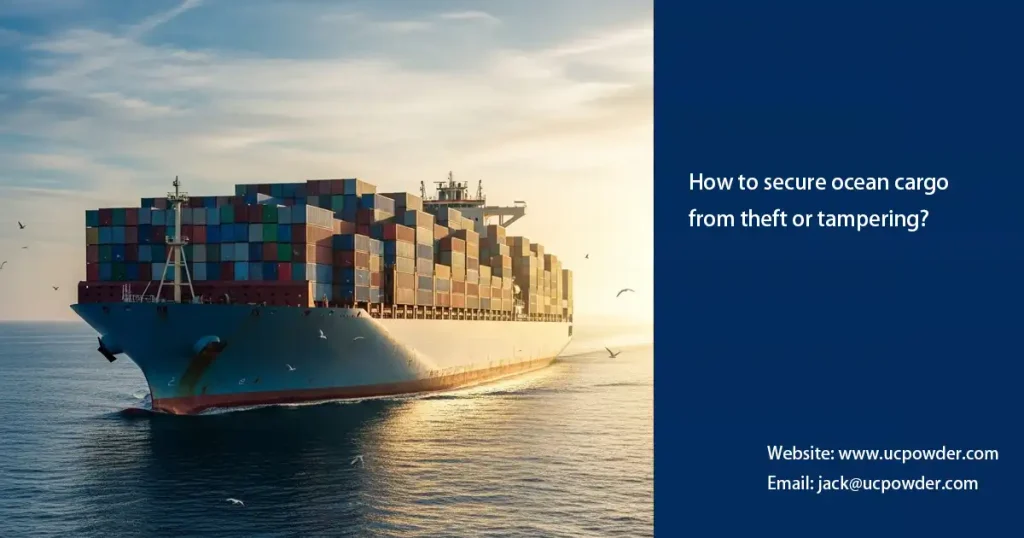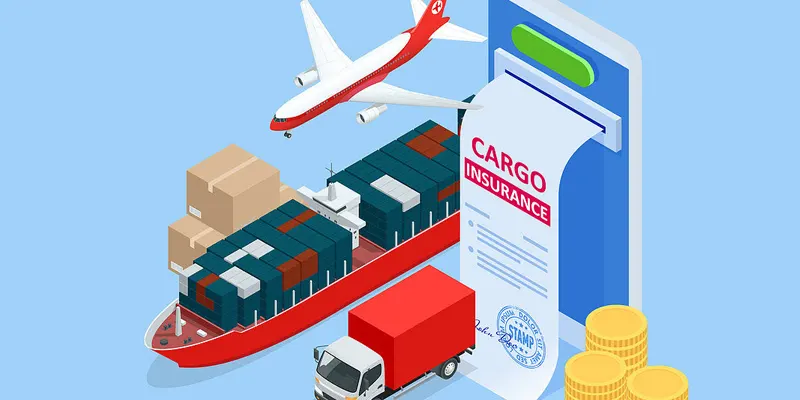How to secure ocean cargo from theft or tampering?
7 Detailed, Practical Steps to Secure Ocean Cargo

1. Select Carefully Vetted Freight Partners
Specific Actions:
- Prioritize partners with ISO 28000 (Supply Chain Security Management) or TAPA (Transported Asset Protection Association) certifications.
- Request security incident reports from the past 12 months to assess their ability to handle theft or tampering.
- Ensure partners provide container status monitoring (e.g., temperature, humidity, and door activity) with real-time data sharing.
- Before signing contracts, clarify security responsibility clauses, such as who oversees port loading and unloading.
Tool Recommendations: Use platforms like Freightos or Alphaliner to analyze shipping companies’ security ratings and customer feedback. Require partners to use logistics software like CargoWise for integrated security data.
Operational Process: Hold monthly security review meetings with partners to discuss risks and improvements. Include breach compensation clauses in contracts.
2. Use High-Security Containers and Locks
Specific Actions:
- Prioritize partners with ISO 28000 (Supply Chain Security Management) or TAPA (Transported Asset Protection Association) certifications.
- Request security incident reports from the past 12 months to assess their ability to handle theft or tampering.
- Ensure partners provide container status monitoring (e.g., temperature, humidity, and door activity) with real-time data sharing.
- Before signing contracts, clarify security responsibility clauses, such as who oversees port loading and unloading.

Tool Recommendations: Source Sealock SmartSeal or LeghornGroup electronic seals, compatible with logistics systems. Use portable X-ray scanners like Rapiscan to inspect container interiors.
Operational Process: Assign unique seal numbers to each shipment, recorded in the bill of lading. During loading and unloading, designate personnel to record seal conditions with high-definition cameras, archiving footage for at least 6 months.
3. Deploy Advanced Cargo Tracking Technology
Specific Actions:
- Install GPS and IoT devices, such as Orbcomm CT 1000 or Traxens Box, to monitor location, temperature, humidity, and container door activity.
- Ensure tracking devices support multi-mode communication (GSM, satellite, and Bluetooth) to handle signal disruptions at sea.
- Integrate tracking data into logistics platforms like SAP or Oracle SCM, setting up automated alerts for route deviations or unauthorized openings.
- For high-value cargo, use trackers with backup batteries, extending operational time to over 30 days.
Tool Recommendations: Choose Orbcomm or Traxens IoT devices with API integration. Use FourKites or Shippeo for real-time cargo visualization.
Operational Process: Check tracking data updates daily to ensure device functionality. Share tracking links with consignees 48 hours before arrival for real-time monitoring.
4. Optimize Packaging to Prevent Tampering and Damage
Specific Actions:
- Use tamper-evident tape, like 3M ScotchSafe, which displays “OPENED” or “VOID” when removed, preventing covert tampering.
- For high-value cargo, use multi-layer packaging: inner polyethylene sealed bags (moisture-proof) and outer steel-strapped wooden crates, compliant with IMDG regulations for hazardous goods.
- Print unique QR codes or serial numbers on packaging, linked to bill of lading data for verification.
- Include desiccants (e.g., silica gel packets) and shock-absorbing materials (e.g., foam padding) to protect cargo from physical damage during transit.

Tool Recommendations: Source TamperGuard tamper-evident labels, resistant to heat and humidity. Use UPM Raflatac RFID tags for quick package integrity scans.
Operational Process: Before loading, photograph packaging and serial numbers, uploading to a cloud database. Upon unloading, check for tampering or damage signs, documenting in handover records.
5. Train Employees to Enhance Security Awareness
Specific Actions:
- Conduct quarterly security training sessions covering forged bills of lading, port theft, and container tampering detection.
- Use scenario-based simulations to teach employees how to spot anomalies, such as damaged seals or mismatched bill of lading numbers.
- Train employees to use handheld RFID scanners or QR code verification devices for rapid cargo checks.
- Establish a 24/7 security hotline for anonymous reporting of suspicious activity, protecting whistleblower privacy.
Tool Recommendations: Use SafetySkills or Vector Solutions online training platforms with English courses. Equip port staff with Honeywell RFID scanners for efficient operations.
Operational Process: Update training content quarterly with new threat scenarios. Require employees to wear ID badges at loading/unloading sites to prevent unauthorized access.
6. Purchase Comprehensive Cargo Insurance
Specific Actions:
- Opt for “all-risk” insurance, like Institute Cargo Clauses A, covering theft, tampering, shipwrecks, and natural disasters.
- For high-risk routes (e.g., Malacca Strait or Red Sea), add coverage for piracy or geopolitical risks.
- Confirm claim processes with insurers like AXA, Zurich, or Marsh, ensuring claims start within 48 hours.
- Prepare detailed cargo lists (value, weight, packaging description) for insurance submissions.

Tool Recommendations: Use InsureTech platforms like Loadsure for quick insurance quotes. Maintain digital copies of bills of lading and tracking data for faster claims.
Operational Process: Before shipping, verify insurance coverage matches cargo value. Submit claims within 24 hours of a loss, including photos and tracking records.
7. Regularly Audit Supply Chain Security Processes
Specific Actions:
- Conduct quarterly supply chain security audits, reviewing loading processes, port security measures, and document verification.
- Use blockchain technology, such as TradeLens or IBM Blockchain, to verify bills of lading and cargo documents, preventing forgery.
- Collaborate with port operators to ensure surveillance cameras cover loading/unloading zones with no blind spots.
- Establish supply chain security KPIs, such as seal integrity rate (target 99.9%) and tracking data update rate (target 100%).
Tool Recommendations: Use Verifai blockchain tools for document authenticity. Deploy Zebra RFID systems to monitor cargo flow at ports.
Operational Process: Post-audit, generate detailed reports listing vulnerabilities and improvement plans. Hold annual security summits with freight partners to enhance collaboration.
You may also be interested in
Have Anything To Ask Us?
Please fill in your email in the form and we’ll get back to assist you soon!




